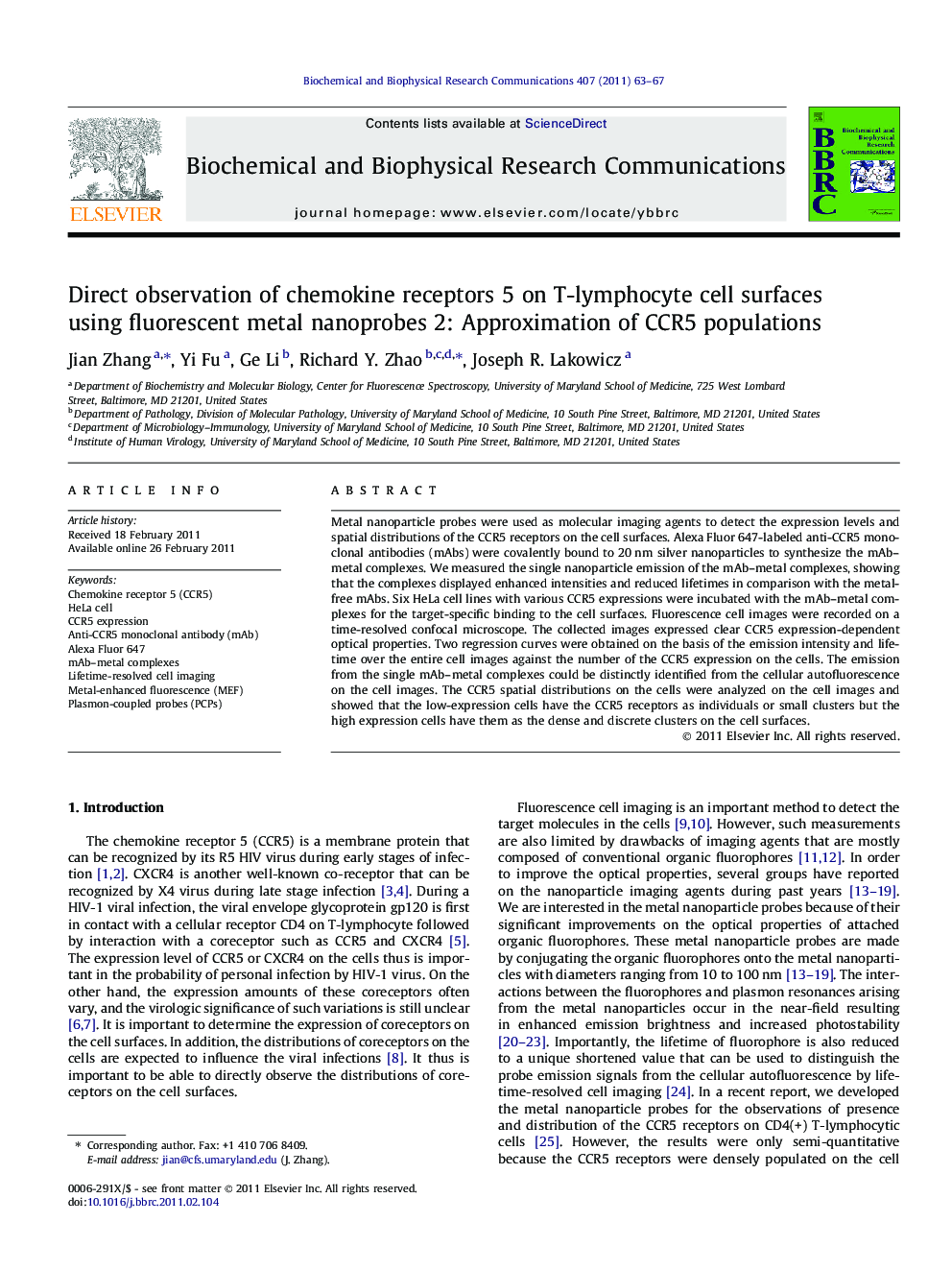| Article ID | Journal | Published Year | Pages | File Type |
|---|---|---|---|---|
| 1930853 | Biochemical and Biophysical Research Communications | 2011 | 5 Pages |
Metal nanoparticle probes were used as molecular imaging agents to detect the expression levels and spatial distributions of the CCR5 receptors on the cell surfaces. Alexa Fluor 647-labeled anti-CCR5 monoclonal antibodies (mAbs) were covalently bound to 20 nm silver nanoparticles to synthesize the mAb–metal complexes. We measured the single nanoparticle emission of the mAb–metal complexes, showing that the complexes displayed enhanced intensities and reduced lifetimes in comparison with the metal-free mAbs. Six HeLa cell lines with various CCR5 expressions were incubated with the mAb–metal complexes for the target-specific binding to the cell surfaces. Fluorescence cell images were recorded on a time-resolved confocal microscope. The collected images expressed clear CCR5 expression-dependent optical properties. Two regression curves were obtained on the basis of the emission intensity and lifetime over the entire cell images against the number of the CCR5 expression on the cells. The emission from the single mAb–metal complexes could be distinctly identified from the cellular autofluorescence on the cell images. The CCR5 spatial distributions on the cells were analyzed on the cell images and showed that the low-expression cells have the CCR5 receptors as individuals or small clusters but the high expression cells have them as the dense and discrete clusters on the cell surfaces.
► Fluorescent mAb–metal complex with enhanced intensity and shortened lifetime. ► Immuno-interactions of mAb–metal complexes with CCR5 receptors on cell surfaces. ► Isolation of conjugated mAb–metal complexes from cellular autofluorescence on cell image. ► Quantification of CCR5 receptors on cell surfaces.
